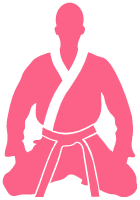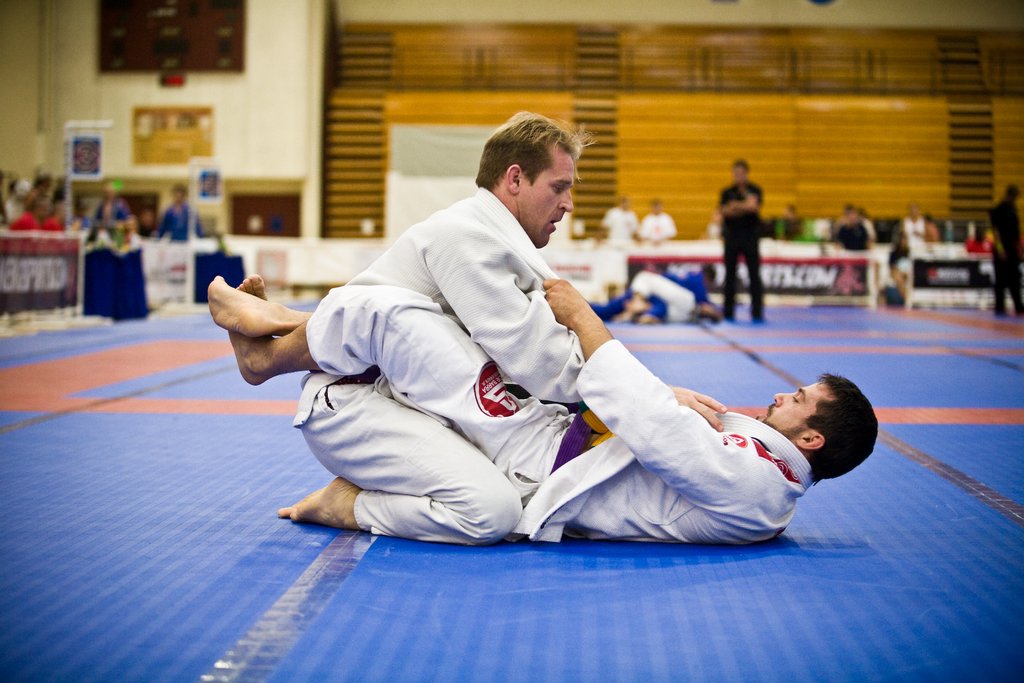Brazilian Jiu-Jitsu is a martial art that emphasizes ground fighting and grappling techniques. The closed guard is a fundamental position in Brazilian Jiu-Jitsu that offers a range of offensive and defensive options. In this article, we will explore the closed guard concept, its importance in Brazilian Jiu-Jitsu, and how to master this position.
Control and posture
One of the key concepts in the closed guard is controlling the opponent’s posture. By controlling their posture, you can limit their mobility and set up various attacks. There are several techniques for controlling the opponent’s posture from the closed guard, including breaking their posture with your legs, using your arms to control their head, and using your legs to control their hips. Additionally, maintaining the closed guard position requires a combination of grip strength, leg strength, and body positioning. Strategies for maintaining the closed guard position include controlling the opponent’s sleeve and collar, using your legs to control their hips, and preventing them from standing up.
Attacks from the closed guard
The closed guard offers a wide range of attacking options, including basic submissions like the armbar and triangle choke, and more advanced submissions like the omoplata and gogoplata. Setting up and executing submissions from the closed guard requires a combination of technique, timing, and control. Common strategies for setting up submissions from the closed guard include breaking the opponent’s posture, isolating their arm or neck, and creating angles for attacking. Additionally, the closed guard allows for attacking transitions, such as switching from a submission attempt to a sweep or back take.
Sweeps from the closed guard
Sweeps from the closed guard are a fundamental aspect of the position, allowing you to transition from a defensive position to a dominant one. Basic sweeps from the closed guard include the scissor sweep and hip bump sweep, while more advanced sweeps include the flower sweep and pendulum sweep. Setting up and executing sweeps from the closed guard requires a combination of grip strength, leg strength, and timing. Common strategies for setting up sweeps from the closed guard include off-balancing the opponent, baiting them into a specific position, and breaking down their posture.
Escapes from the closed guard
Escapes from the closed guard are essential for maintaining a strong defensive position and preventing the bottom player from being submitted or swept. Basic escapes from the closed guard include the stand-up escape, the knee-to-elbow escape, and the hip escape. These techniques focus on creating space and breaking the opponent’s grip to regain a neutral position. More advanced escapes from the closed guard involve using momentum and timing to transition into a dominant position, such as the sit-up escape and the technical stand-up. It is important to have a strong understanding of both basic and advanced escapes from the closed guard to be able to defend against skilled opponents.
Training Drills and Tips
Training drills and tips are essential for improving your skills in the closed guard. A common drill for beginners is to practice maintaining a closed guard while their partner attempts to escape. This drill helps improve grip strength and timing, as well as the ability to anticipate and react to your opponent’s movements. More advanced drills include practicing transitions from the closed guard to other positions, such as mount or back control, and practicing sweeps and submissions against resisting opponents. Additionally, tips for training in the closed guard include focusing on maintaining a strong base, using your legs to control your opponent, and constantly adjusting your grips to maintain control. Consistent drilling and practice, both with and without resistance, can help you become more proficient in the closed guard position.
Essential Concepts for the Closed Guard
When in the closed guard, there are several key concepts to keep in mind to effectively control your opponent and set up attacks. One of the most important concepts is maintaining a strong posture, which involves keeping your spine straight and head up to prevent your opponent from breaking you down and passing your guard. Another important concept is maintaining constant hip movement, whether it be shifting your hips to create angles for attacks or using hip escapes to avoid your opponent’s attacks. It’s also crucial to maintain control of your opponent’s posture, using your legs and arms to break their alignment and prevent them from mounting effective offense. Finally, maintaining a strong grip on your opponent’s collar and sleeves can help you control their movement and set up a variety of attacks. By focusing on these essential concepts, you can improve your closed guard game and become a more well-rounded Brazilian Jiu-Jitsu practitioner.
In conclusion, the closed guard is a versatile position that offers both offensive and defensive options for Brazilian Jiu-Jitsu practitioners. By understanding the basic principles of the closed guard and mastering techniques such as submissions, sweeps, and escapes, you can become a more effective and well-rounded grappler. Remember to prioritize your grips and maintain a strong base, while also being aware of your opponent’s movements and potential attacks. With consistent training and application of these fundamental concepts, you can unlock the full potential of the closed guard and add it to your arsenal of techniques.
Hey there! Just a heads up that some of the links in this post are affiliate links, which means that if you click on them and make a purchase, I may earn a commission. But don’t worry, it won’t cost you anything extra – in fact, you might even get a sweet deal! Plus, every purchase made through one of these links helps support my blog and keep the content coming. So, if you do decide to make a purchase, thank you so much for your support – it means the world to me!
All the best,
Will








Pingback: Unleashing the Power of the Plan B Sweep in Jiu Jitsu – Jiu Jitsu Hub
Pingback: Throwback Sweep: Mastering the Old School Sweep in BJJ – Jiu Jitsu Hub
Pingback: peruvian necktie – Jiu Jitsu Hub
Pingback: elevator sweep – Jiu Jitsu Hub
Pingback: Elevate Your Game: Mastering the Elevator Sweep in BJJ – Jiu Jitsu Hub
Pingback: Stand-Up Escape from Closed Guard: Mastering the Fundamental Technique for Getting Back on Your Feet – Jiu Jitsu Hub
Pingback: Mastering the Leg Drag Pass to Back Take: A Comprehensive Guide – Jiu Jitsu Hub
Pingback: Mastering the Bridge and Roll in Brazilian Jiu-Jitsu: A Step-by-Step Guide – Jiu Jitsu Hub
Pingback: The Omoplata Sweep: A Step-by-Step Guide to Mastering this Essential BJJ Move – Jiu Jitsu Hub
Pingback: Mastering Closed Guard Sweeps: Techniques and Tips – Jiu Jitsu Hub
Pingback: Unleashing the Power of the Pendulum Sweep: Techniques and Strategies for Success – Jiu Jitsu Hub